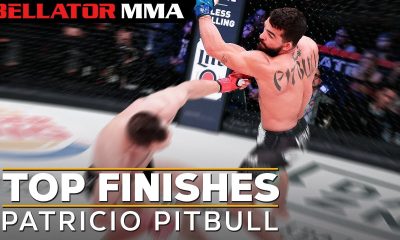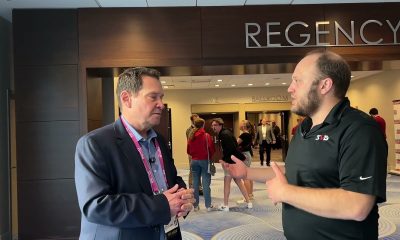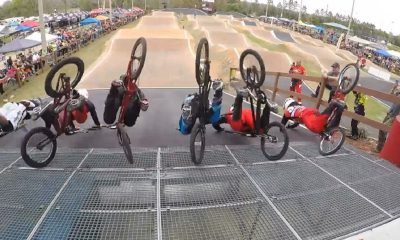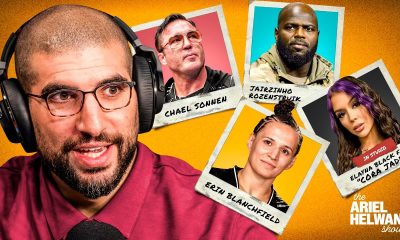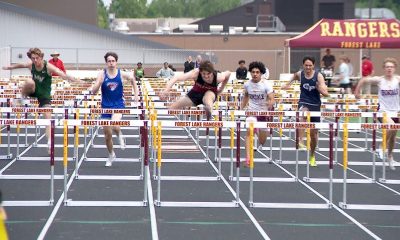NIL
Leon Costello Named An FCS AD of the Year by NACDA
Story Links “I also need to thank President Waded Cruzado and the entire MSU community for their unwavering supporting our athletic department, our dedicated fans and supporters that stand with us through every contest and support us at a championship level, and my family that allows me to live out my dream,” Costello said. “Thank […]



“I also need to thank President Waded Cruzado and the entire MSU community for their unwavering supporting our athletic department, our dedicated fans and supporters that stand with us through every contest and support us at a championship level, and my family that allows me to live out my dream,” Costello said. “Thank you doesn’t say enough but I am truly humbled by this honor and excited about our future. The best is yet to come.”
Costello arrived at Montana State in 2016 after six years of progressively increased responsibilities at South Dakota State, culminating with two years as Deputy Athletic Director from 2014 to 2016. He began his intercollegiate athletics career as a marketing assistant at Northern Iowa in the fall of 2002, becoming that department’s director just three months later. In 2005 Costello became Assistant Athletic Director for Marketing and Promotions, and in 2008 was elevated to Associate Athletic Director for External Relations. During his time at South Dakota State he helped spearhead SDSU’s massive facilities improvement project, was involved in sport oversight of nine Jackrabbit programs, and managed the department’s external operations. After Cruzado tabbed him as the school’s 13th Director of Athletics, he assumed that position on July 1, 2016.
“It is an incredible honor to be recognized by NACDA and I truly believe this is an award for Bobcat Nation as a whole, as this award speaks to the accomplishments we have achieved together,” Costello said. “I am fortunate to work at an institution that values athletics and to also work with an incredible team of student-athletes, coaches and staff that put in the time and energy to make Bobcat Athletics what it is today. I thank them for their commitment to our vision and excellence achieved in the classroom and competition.”
BOZEMAN, Montana – Leon Costello, Montana State University’s Director of Athletics since 2016, earned a National Association of Collegiate Directors of Athletics AD of the Year Award for 2023-24, the organization announced Monday.
Student-athlete support has also been the focus of staff additions during Costello’s tenure. Those include an embedded sports psychologist, a sports dietitian, and enhanced staffing of the sports medicine and strength and conditioning staffs.
Bobcat Athletics has enjoyed unprecedented success under Costello’s leadership. During the 2021-22 academic year, MSU became the first school in Big Sky history to finish in the top three in each conference sport in which it competed. The Bobcat men’s basketball program played in three consecutive NCAA Tournaments, the MSU women’s basketball team won 30 games this year, both Big Sky Conference bests, and the MSU football team played for the FCS championship following the 2021 and 2024 seasons and has advanced to the playoffs in a program-best six straight campaigns.
Under Costello’s guidance, Bobcat student-athletes have combined to win one Big Sky Conference Presidents’ Cup, two men’s All-Sports Trophies, the school’s first Women’s All-Sports Trophy, and all nine Brawl of the Wild Trophy Series competitions encompassing all sports between MSU and the University of Montana.
“Montana State University is privileged to have Leon Costello as our athletics director,” MSU President Waded Cruzado said. “Leon has added energy, focus, academic performance and an institutional sense of pride and belonging to MSU. We are proud to call Leon a Bobcat!”
Costello is one of four honorees from the NCAA Division I Football Championship Subdivision, or FCS. NACDA presented 28 awards, four each in seven divisions: Football Bowl Subdivision, FCS, Division I-AAA, Division II, Division II, NAIA and Junior/Community College.
With the support and leadership of President Cruzado, Costello has remade the school’s athletics facilities. In the last five years, the department has added the Bobcat Athletic Complex to house MSU football offices and support services, a renovation to all areas supporting student-athletes in Brick Breeden Fieldhouse, and – awaiting completion this summer – the Stark-Kennedy Indoor Athletic Center providing a practice facility for football and a training and competition venue for track and field.
NACDA’s AD of the Year program is in its 27th year, recognizing over 600 of its members with this award. Costello will be honored during the organization’s convention in June.
#GoCatsGo
Originally from Fairbank, Iowa, Costello starred in basketball at Loras College in Dubuque, Iowa, where he captained the DuHawks as a senior and earned Bill Bradley Scholastic All-America honors before graduating in 1998. He and his wife Heather spend much of their time following the blossoming athletic academic careers of their daughter Cailin and sons Michael and Griffin.
Academic success has remained part and parcel of the program’s progress and success. Bobcat student-athletes compiled a cumulative GPA of at least 3.0 (out of 4.0) in the last 46 consecutive semesters, and that was before last fall’s 3.42 mark.
NIL
Deion Sanders’ freshman QB at CU has business plan for future
How coaches salaries and the NIL bill affects college football Dan Wolken breaks down the annual college football coaches compensation package to discuss salaries and how the NIL bill affects them. Sports Pulse Colorado freshman quarterback Julian “JuJu” Lewis doesn’t turn 18 years old until September and still needs to add more beef to a […]

How coaches salaries and the NIL bill affects college football
Dan Wolken breaks down the annual college football coaches compensation package to discuss salaries and how the NIL bill affects them.
Sports Pulse
Colorado freshman quarterback Julian “JuJu” Lewis doesn’t turn 18 years old until September and still needs to add more beef to a body that weighs less than 200 pounds. But he’s already in the middle of the biggest storyline of the season for his new head coach, Deion Sanders.
As a top recruit out of Carrollton, Georgia, Lewis also has a business agent, his own branded line of merchandise and an ownership stake in a company that aims to democratize name, image and likeness deals for college players (NIL).
In many ways, this makes him the poster child of this wild new era of college sports. His father even makes sure he knows his roles.
“He’s always reminding me that I have two jobs: QB and entrepreneur,” Lewis said.
Lewis agreed to discuss these dual ambitions in an email interview with USA TODAY Sports. Both roles are being boosted by a company that he partly owns called Fanstake, where fans can pay to lure recruits to their favorite college teams by contributing to their NIL deals.
By the end of June, Lewis said he plans to announce at least three other equity deals besides Fanstake and will have four other active NIL deals before the season. Beyond that, Lewis hopes to win the battle to replace Shedeur Sanders as CU’s next starting quarterback and then use Fanstake as a tool to lure top recruits to Colorado.
The goal is to seize all of these opportunities in Boulder, where the spotlight will include at least four CU games on ESPN or Fox in the first month of the season, but with no guarantee that Lewis will play in any of them.
Lewis part of battle to replace Shedeur Sanders
After Lewis signed with Colorado Dec. 4, Liberty transfer quarterback Kaidon Salter committed to CU two weeks later with one season of college eligibility remaining.
Did Lewis know when he committed to CU that the Buffaloes would bring in another QB for 2025?
Might he split time with Salter this season or consider redshirting?
The interview was edited for clarity and length and was arranged through the company.
∎ USA TODAY Sports: Before you committed and signed with CU late last year, did you know CU might later bring in a transfer QB?
“Coach Prime runs this like an NFL team,” Lewis said. “Plus every program in college football is always going to try and get better and have depth at every position. You can’t even prepare for the season without enough QBs on the roster.”
∎ What did CU say about maybe bringing in another QB before you signed with CU?
“CU is about development and competition,” Lewis said. “The only thing I was looking for as a recruit was to be coached by great coaches and have an opportunity to compete as a freshman. I’ve been competing for QB jobs since I was 7. I joined a team at 10 that already had a QB, I competed every day against the guy who was there, and we ended up winning the Battle Youth National Championship that season and I threw 70 touchdown passes.”
Lewis also provided a reminder that he competed for the starting job in high school, too, where he played for the Carrollton Trojans in Georgia.
“Carrollton had kids who grew up wanting to be Trojans and I moved there,” Lewis said. “I wasn’t recruited by (coach) Joey King or asked to come. I made a decision to go and compete at the end of 7th grade. Then, going into 9th grade, I had to compete again for the varsity job. I’m not the kid who was ever handed jobs. My story is different. People just see the results and assume I’ve had some easy path. Other guys’ dads coached teams, and they were automatically the QB. My dad took me to the hardest coaches and toughest programs, and I always had to earn it. Anything different and this wouldn’t be my story.”
∎ Do you see CU picking one QB to go with in the fall season or maybe playing at least two on a situational basis because you have different styles?
“Coach Prime and Coach (Pat) Shurmur are going to put me in the best position to develop and our team in the best position to win. I have total faith in that. And I’ve got a lot of work to do in a little bit of time, so I’m ready when my coaches say I’m ready.”
∎ Do you plan to add a certain amount of weight as some new players do out of high school?
“I’ve gained 15lbs since January,” Lewis wrote. “I’ll probably put on whatever I can add before we get into pads and that will be what it is for this season.”
Lewis is now up to 198 pounds on his 6-foot-1 frame. He normally would be headed into his senior season of high school in 2025, but he reclassified to start college a year earlier.
∎ How is your NIL business going and how important is that to your college career?
“I’m blessed to be a part of this era in college and high school sports,” Lewis replied. “There are thousands of great athletes who came before us who didn’t have the opportunities today. NIL has nothing to do with my college career; football and NIL are two very separate things. Football is my priority. I have a responsibility to myself, my teammates, and my university to become the best player that I can be. NIL is going well, I’m thankful for the opportunities that I have. My dad and my team have done a really good job creating opportunities for me.”
How Lewis plans to use company to boost CU roster
∎ How did you get involved with Fanstake and what appealed to you about it?
“When I heard about Fanstake, I was immediately interested because it allows players to help each other and their potential programs. At the end of the day we all want to win, and that’s not possible without great teammates around you. The thought of fans being able to support their team and future players during the recruiting process is what made it a ‘no brainer’ for me.”
Lewis also said he looks forward to “using them next portal season to bring in players to join us at CU.”
One way he could do this is by encouraging CU fans to contribute money toward luring a player on Fanstake. The company started in November and already has more than 20,000 users, according to Greg Glass, the company’s co-founder.
One example shows how Fanstake works. Five-star basketball prospect Nate Ament was wooed by Louisville fans who crowdfunded a combined $88,000 on Fanstake for him if he signed with the Cardinals. He instead decided to sign with Tennessee, whose fans had pledged only about $13,000.
The Louisville fans who put money down for Ament got their money returned since Ament signed with a different team. The $13,000 from Tennessee fans instead goes toward Ament’s sponsorship deal with Fanstake.
“It helps democratize this landscape a little bit because even if you can’t write a half-million-dollar check, you can get 100,000 fans to write $10 checks, or whatever it might be,” Glass told USA TODAY Sports.
Fanstake partnered with Lewis after he made his decision to commit to the Buffaloes. The deal appealed to him, Glass said, because it was a way to bring in more talent to Boulder.
“He wanted to make sure it wasn’t just his NIL, but that he had a squad around him that was going to be secure,” Glass said.
The ‘last thing’ Julian Lewis is worried about
Lewis still made it clear where his NIL endeavors fit into his decision to join the Buffs after previously committing to play at Southern California.
∎ Was NIL part of your decision to go to CU?
“No it wasn’t,” Lewis replied. “It really came down to where I wanted to live and the opportunity to follow Shedeur who everyone knew was leaving for the NFL.”
∎ NIL is part of some players’ decisions to stay at a particular school. Would it be for you going forward? If so, how?
“That’s the last thing I’m worried about, right,” Lewis replied. “I’m a Buff.”
∎ Because of your youth compared to Kaidon Salter’s experience, some have wondered if you might be a candidate to redshirt this year. Nothing has been decided about that. But would you be open to that if it was ever suggested to you?
“I’m going to compete everyday and prepare for my freshman season,” he stated.
∎ What are your plans this summer?
“I will be in Boulder for the summer, taking classes and working out.”
∎ By chance do you go back to The Sink in Boulder to have the JuJu burger that the restaurant named after you?
“No not yet.”
∎ For those who don’t know, how did you get the nickname “JuJu”?
“My older sister started calling me JuJu when I was like 3.”
Colorado opens the season Aug. 29 against Georgia Tech in a home game on ESPN.
Follow reporter Brent Schrotenboer @Schrotenboer. Email: bschrotenb@usatoday.com
NIL
New Michigan State AD J Batt’s priority list: build connections, funds
Tom Izzo feels ‘reinvigorated’ by Elite Eight run, MSU basketball MSU head coach Tom Izzo fell to 8-3 in Elite Eight games in a night that was all Auburn from the start in March Madness, March 30, 2025 in Atlanta. J Batt, Michigan State’s new athletic director, faces navigating the university’s political landscape and uniting […]

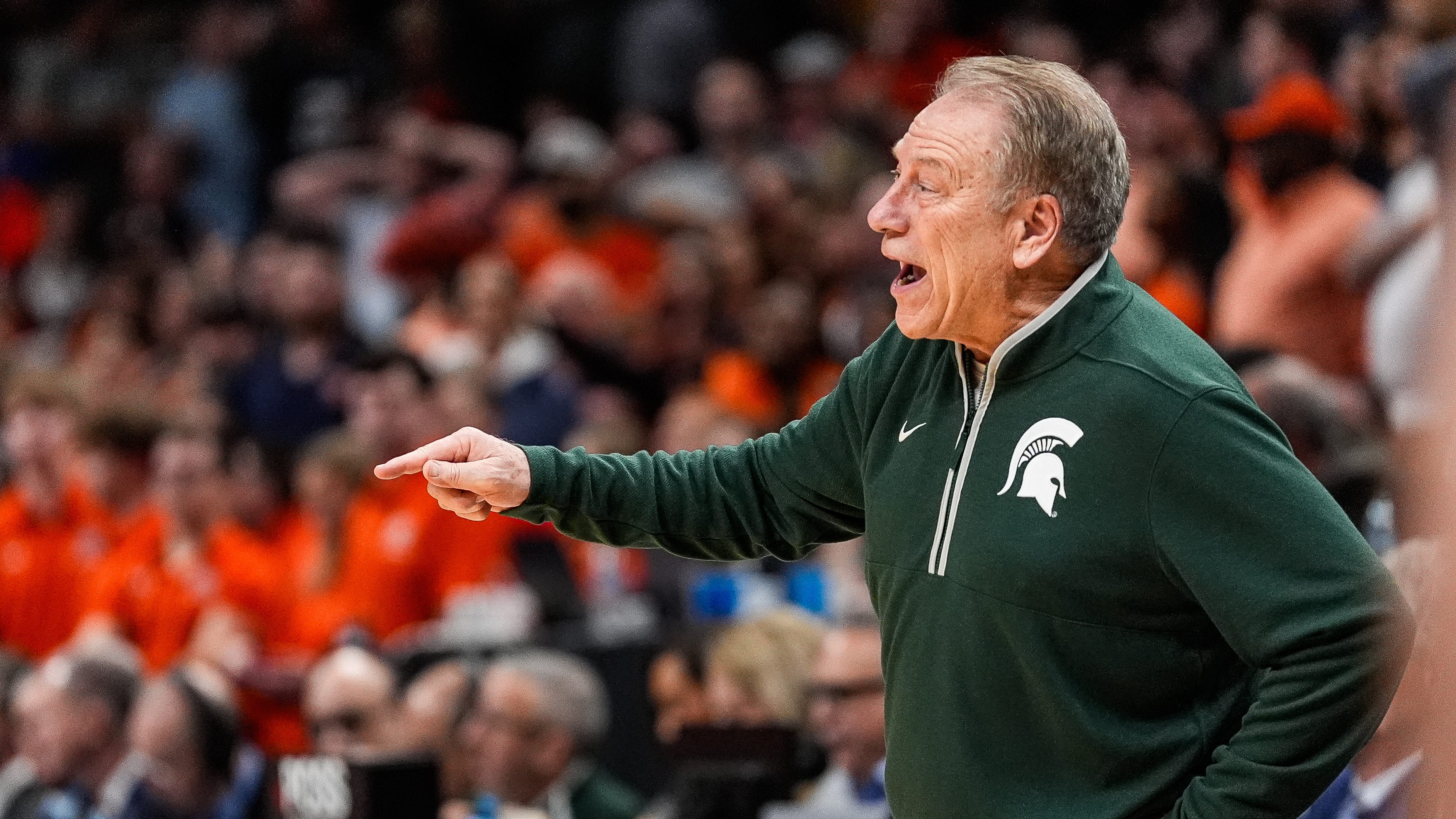
Tom Izzo feels ‘reinvigorated’ by Elite Eight run, MSU basketball
MSU head coach Tom Izzo fell to 8-3 in Elite Eight games in a night that was all Auburn from the start in March Madness, March 30, 2025 in Atlanta.
- J Batt, Michigan State’s new athletic director, faces navigating the university’s political landscape and uniting its power brokers.
- Batt’s financial priorities include boosting fundraising, enhancing the NIL structure, and exploring stadium naming rights.
- Stabilizing the athletic department’s budget, which has seen recent deficits, is another key task for the new AD.
To say Michigan State athletics is in a transitional and transformative period is an understatement.
It might be the most critical juncture for the school since the 1940s, when John Hannah, Ralph Young and Biggie Munn angled to get the Spartans into the Big Ten.
With college sports at a crossroad between their altruistic past and big-money present, MSU’s new athletic director J Batt arrives from Georgia Tech with a task list that will require a sharpened sense of prioritizing from a host of major needs to move the Spartans back to the forefront in the future.
Batt will be publicly introduced during a news conference at 3 p.m. Wednesday, June 4, inside Breslin Center. His contract is expected to be approved by MSU’s Board of Trustees at their next meeting June 13 in Traverse City.
But as Batt begins his job in East Lansing the week of June 16, there will be a litany of tasks on his agenda before the 2025-26 school year begins Aug. 25, with the football season kicking off four days later. Here is a list of five critical things on the to-do list for MSU’s 21st athletic director (and the school’s first outside hire to the position in 30 years).
1. Learn the political landscape
The prevailing belief is that Batt’s biggest tasks are increasing fundraising and enhancing MSU’s name, image and likeness structure — and they undoubtedly are high-ranking priorities — but none of that gets accomplished without the 43-year-old, who grew up in Virginia, first learning to navigate the tricky political ecosystem that has at times been the school’s biggest roadblock.
Save for a 10-year window of solace and success under Mark Hollis from 2007-17, the school’s internal powerbrokers and biggest benefactors externally often have displayed a bad habit of stunting progress with infighting and insolence. Hollis, along with then-president Lou Anna K. Simon, managed to get those forces pulling in one direction before everything was undone by the Larry Nassar scandal, leaving MSU in limbo and with flagging leadership since 2018. Before their abrupt resignations, Hollis and Simon two also gave the school and athletic program a seat at the head table of college sports with their ability to politic at the national and Big Ten levels while assuaging local political and campus leadership.
Both Hollis and Simon were MSU lifers who knew the history and potential landmines; Batt walks in as a complete outsider, as did current president Kevin Guskiewicz a little more than a year ago. They have known each other for about 25 years, Batt said Tuesday on the “MSU Today” podcast, from his time as a soccer player at North Carolina who participated in Guskiewicz’s concussion research projects before he ascended the ranks of academia.
Building relationships quickly in East Lansing is essential. They will rely on each other’s trust, though both new leaders must lean on Hall of Fame basketball coach Tom Izzo’s 40-plus years of experience at the university in navigating those sometimes-turbulent political waters. But pushing for change as an outsider also can create job-altering friction at MSU. Without the support of the right people, even with a visionary approach, the strongest-willed athletic director can wind up with his hands tied.
2. Touch hearts, open wallets
That also includes connecting with donors.
Finding a way to make both the external NIL collectives externally and internal Spartan Fund financially robust will be a major priority. Batt and Guskiezicz (who in March announced a $4 billion university-wide fundraising effort) are tasked with energizing the donor base that — as is the case at many other universities — is fatigued by the growing need for more money to keep major college athletics afloat.
One of Batt’s primary missions will be analyzing the future of Spartan Stadium and drumming up funds for upgrades or replacement. Departed athletic director Alan Haller this winter said MSU must explore selling naming rights to facilities, a move it previously balked at pursuing; Batt must also connect with the right corporate partners to give his new department as big a financial influx as possible.
3. Stabilize MSU’s spending
The athletic department has struggled to balance the books since before Hollis left and the coronavirus pandemic happened.
In 2023-24, MSU operated at a deficit for the fourth time in five years (under Haller and Bill Beekman before him), with nearly $180.5 million in total operating expenses to more than $163.7 million in total operating revenue, according annual documents filed Jan. 13 with the NCAA and obtained that month by the Free Press and the USA TODAY Network.
The more than $16.7 million shortall came a year after operating at an $11.2 million deficit in 2022-23. The athletic department had a $16.35 million surplus during the 2021-22 fiscal year, but its deficit was $17.8 million in 2019-20 and $15.4 million in 2020-21. The most recent fiscal year report puts the athletic department’s debt at nearly $91 million, up from $68.7 million the previous year.
While trying to get back in the black on the budget, Batt also will have to learn to fiscally manage more sports with the Spartans — 23, to Georgia Tech’s 17 — while being a “fiery athletic director that likes to win,” as he called himself Tuesday on the “MSU Today” podcast.
4. Restructure NIL
With change potentially coming nationally to college sports, getting MSU’s external donor groups on the same page will be essential. The biggest among them who have driven the direction — including Greg Williams of Acrisure, former Izzo player Mat Ishbia of United Wholesale Mortgage, Steve St. Andre of Shift Digital and those within the This is Sparta! collective — all possess financial clout individually. Reaching a higher plateau collectively will be Batt’s mission, using the current benefactors as a starting point to entice more to join, then uniting them all under a new umbrella to prepare for the next pivot when the House settlement kicks in and schools will essentially become distributors of funding.
Izzo understands the need for financing in the new world he’s adapting to, despite winning a Big Ten title while sticking to his principles. And in major college football, the market to pay the NFL-caliber players now required to compete for FBS championships is exploding. That’s just the two primary sports and not taking into account the money needed to pay players in non-revenue sports that Haller left in good position competitively.
5. Focus on future
MSU’s biggest revenue generator remains its football program, and the stadium and on-field product both need refreshing. The excitement of the Mark Dantonio era showed the Spartans still can walk among the giants in the sport, as did the one magical year with running back Kenneth Walker III under coach Mel Tucker that was the outlier of the past decade.
Then comes hard conversations about potentially cutting more sports after Beekman eliminated the men’s and women’s swimming and diving programs in 2021. It is an uncomfortable topic, particularly for a former non-revenue athlete like Batt, who was a goalie on North Carolina’s 2001 national champion men’s soccer team and said he believes in being “in the opportunity business” for student-athletes despite the trend toward professionalism.
And that barely scratches the surface of what lies ahead as Batt leaves the declining Atlantic Coast Conference to try and bring MSU back among the elite of the power-wielding Big Ten.
Contact Chris Solari: csolari@freepress.com. Follow him @chrissolari.
Subscribe to the “Spartan Speak” podcast for new episodes on Apple Podcasts, Spotify or anywhere you listen to podcasts. And catch all of our podcasts and daily voice briefing at freep.com/podcasts.
Michigan State athletic directors
- Charles Bemies: 1899-1900.
- George Denham: 1901-02.
- Chester Brewer: 1903-10, 1917, 1919-21.
- John Macklin: 1911-15.
- George Gauthier: 1916, 1918.
- Albert Barron: 1922.
- Ralph Young: 1923-54.
- Clarence “Biggie” Munn: 1954-72.
- J. Burt Smith: 1972-75.
- John D. Shingleton: 1975-76.
- Joe Kearney: 1976-80.
- Doug Weaver: 1980-90.
- George Perles: 1990-92.
- Merrily Dean Baker: 1992-95.
- Merritt Norvell: 1995-99.
- Clarence Underwood: 1999-2002.
- Ron Mason: 2002-07.
- Mark Hollis: 2007-18.
- Bill Beekman: 2018-2021.
- Alan Haller: 2021-May 1, 2025.
- J Batt: Hired June 2, 2025 (begins week of June 16).
NIL
Every N.B.A. Shoe Deal Is a Gamble. Converse Hit the Jackpot.
In the rush to sign players early, some mistakes are made. But as Shai Gilgeous-Alexander reaches basketball’s biggest stage, he is taking his shoe company with him. Shai Gilgeous-Alexander’s year could not have gone better — for Converse. The 26-year-old point guard, now in his seventh season, led the N.B.A. in scoring. He won the […]
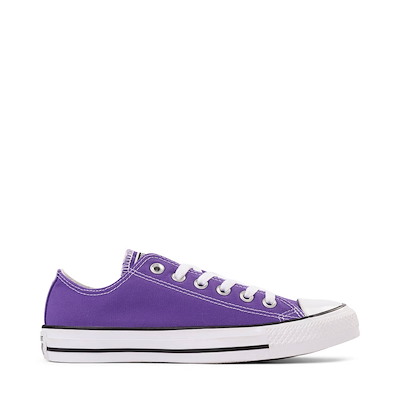

In the rush to sign players early, some mistakes are made. But as Shai Gilgeous-Alexander reaches basketball’s biggest stage, he is taking his shoe company with him.
Shai Gilgeous-Alexander’s year could not have gone better — for Converse.
The 26-year-old point guard, now in his seventh season, led the N.B.A. in scoring. He won the league’s Most Valuable Player Award. And his team, the Oklahoma City Thunder, had the best record in the N.B.A.
On Thursday, Mr. Gilgeous-Alexander and the Thunder will face the Indiana Pacers in Game 1 of the N.B.A. finals, trying for the franchise’s first championship since 1979 (back when the Thunder were known as the Seattle SuperSonics).
So when the Shai 001, Mr. Gilgeous-Alexander’s first signature sneaker, is released by Converse this autumn, it will be a fitting coda to a triumphant season — and, for the brand, the ideal moment to capitalize on its marquee star’s success.
What’s remarkable is that this confluence of favorable conditions was not some brilliant marketing stratagem — it was, in essence, a stroke of luck. And with the time and money invested by shoe companies in upcoming N.B.A. players, who are sometimes signed before they have played a single minute in the league, things could have easily gone another way.
Adrian Stelly, the director of sports marketing for Converse, met Mr. Gilgeous-Alexander more than a decade ago, when he was in high school in Hamilton, Ontario. He signed him to the brand in 2019 during Mr. Gilgeous-Alexander’s rookie season with the Los Angeles Clippers, when he averaged 10.8 points per game — long before he made the leap to All-Star levels.
NIL
Dan McDonnell embraces NIL amid resources fight
Prior to 2025, the Cardinals missed three of the last four NCAA Tournaments. Now they’re headed to the 10th super regional of head coach Dan McDonnell’s 19 years at the helm. Dan McDonnell’s voice trembled, and his eyes welled up with tears. “My wife will tell ya, I’m not easy to deal with,” McDonnell said, […]

Prior to 2025, the Cardinals missed three of the last four NCAA Tournaments. Now they’re headed to the 10th super regional of head coach Dan McDonnell’s 19 years at the helm.
Dan McDonnell’s voice trembled, and his eyes welled up with tears.
“My wife will tell ya, I’m not easy to deal with,” McDonnell said, scoffing, “when we’re losing.”
He paused in an attempt to regulate his emotions.
“And the last couple years were rough,” McDonnell continued, speaking from the podium during Louisville baseball’s postgame news conference Sunday. “I mean, they were.”
Prior to 2025, the Cardinals missed three of the last four NCAA Tournaments — a low point in McDonnell’s otherwise impressive 19 years as U of L head coach. College baseball, like most other sports in the name, image and likeness era, has become a high-speed arms race for resources and talent. McDonnell has expressed his dissatisfaction with Louisville’s support in that realm over the last few years, which has correlated with a downturn in results.
He described himself Sunday as having been trapped “in the valley.” But thanks to his wife, Julie, their faith in God and “super players,” McDonnell found a way out and into the NCAA super regionals after an impressive 6-0 win over Wright State in Nashville. McDonnell pulled out a pair of Cardinal-red reading glasses and read an excerpt from “The Path to Higher Life” by poet Andrew Murray
“Down, lower down! Just as water always seeks and fills the lowest place, so the moment God finds men abased and empty, His glory and power flow in to exalt and to bless.”
The battle for resources has been a tough one for McDonnell through nearly two decades and three athletics directors. Here’s a look at the current state of spending on Louisville baseball as the Cards prepare for the next phase of the postseason:
Dan Furman, president of the official collective of Louisville Athletics 502Circle, said McDonnell truly bought into NIL for the first time this last offseason after a timid embrace of it the year prior. 502Circle amped up spending for the 2025 roster (though Furman did not want to get into precise dollar amounts) to retain talented players including Zion Rose, Patrick Forbes and Tucker Biven. While the collective isn’t shelling out the same amount of cash as some of baseball’s biggest brands such as Tennessee or Ole Miss — where players could’ve gone and gotten six-figure NIL deals, Furman said — 502Circle’s budget is nothing to sniff at.
“I know he gets in it about resources,” Furman said of McDonnell, “but it’s like, I would be hard-pressed to find seven teams that spent more in the ACC. And the ACC was the most competitive baseball league in the country this year.”
Furman, who played college baseball at Pitt from 2014-17, also touted Louisville’s rich tradition and pro pedigree as a selling point for recruits. McDonnell has led U of L to a whopping 10 NCAA super regionals and five College World Series. Active Cards in MLB include Adam Duvall (Atlanta Braves), Henry Davis (Pittsburgh Pirates), Will Smith and Dalton Rushing (both with the Los Angeles Dodgers).
In Furman’s view, talent acquisition is the key to success. It’s not about the “extravagant facilities” or “flashing lights.” It’s about getting the players who can compete, win championships and develop into successful pros.
In June 2023, Louisville approved a $3 million upgrade to Jim Patterson Stadium. Since then, U of L baseball has renovated its locker room (using a six-figure donation from Davis), stadium entryway, ticket office, weight room/workout area, athletic training room and home and visitor dugouts. Louisville has also expanded the berm seating area and created a new third-base fan area inside the stadium.
These upgrades “accounted for the majority of the money that was approved,” U of L baseball spokesperson Stephen Williams told The Courier Journal.
U of L announced it had secured a $3 million donation from Kroger in April 2021 to build a new indoor practice facility, but that project has yet to break ground.
“Since we announced the indoor facility in the Spring of 2021, the college athletics landscape has changed dramatically,” Williams told The Courier Journal in an email. “With that in mind, we decided to pause on that and other capital projects throughout the department.
“As has been the norm with athletic departments around the country, with the constantly changing landscape around NIL, revenue sharing, etc., the University of Louisville is constantly evaluating how to best utilize the resources provided by our fans, donors, and sponsors so that all of our programs are well positioned to compete at the highest level and win championships.”
Below is a list of Louisville baseball spending based on the athletics department’s annual NCAA financial report.
The 2023-24 fiscal year roughly correlates to the 2023-24 school year, which encompassed the 2024 baseball season. The 2022-23 fiscal year roughly correlates to the 2022-23 school year, which encompassed the 2023 baseball season, and so on.
Of note: 2019 is the final fiscal year not impacted by the COVID-19 pandemic. The 2020 baseball season ended in March, months short — meaning fewer games and less spending. Since then, athletics departments across the country have been recovering from the impact canceled and abbreviated seasons had on their annual budgets.
Louisville baseball spending:
- FY2019: $4,572,824 (3.02% of total athletics spending)
- FY2020: $4,164,385 (3%)
- FY2021: $3,593,067 (3.29%)
- FY2022: $5,204,574 (3.72%)
- FY2023: $4,995,016 (3.56%)
- FY2024: $5,591,981 (3.39%)
When comparing McDonnell’s reported compensation with that of coaches in the 2024 College World Series, he’s the second-highest paid by a wide margin. Head coaching compensation listed in NCAA financial reports includes “salaries, benefits and bonuses paid by the university and related entities.”
2024 College World Series schools head coach compensation vs. Louisville:
- Dan McDonnell, Louisville: $1,787,567 (31.97% of total baseball spending)
- Nick Mingione, Kentucky: $983,315 (20.07%)
- Link Jarrett, Florida State: $907,143 (17.15%)
- Elliott Avent, N.C. State: $735,838 (15.69%)
- Jim Schlossnagle, Texas A&M: $1,373,715 (14.99%)
- Tony Vitello, Tennessee: $1,916,592 (14.28%)
- Scott Forbes, North Carolina: $688,822 (14.12%)
Reach college sports enterprise reporter Payton Titus at ptitus@gannett.com, and follow her on X @petitus25.
NIL
Wildcats Announce 2025 Fall Schedule
Story Links VILLANOVA, Pa. – Eleven regular season home games at the newly resurfaced Higgins Soccer Complex highlight the 2025 Villanova Men’s Soccer regular season schedule announced today. “We’re excited to release our 2025 schedule, which features a strong slate of home games and a number of high-caliber opponents […]
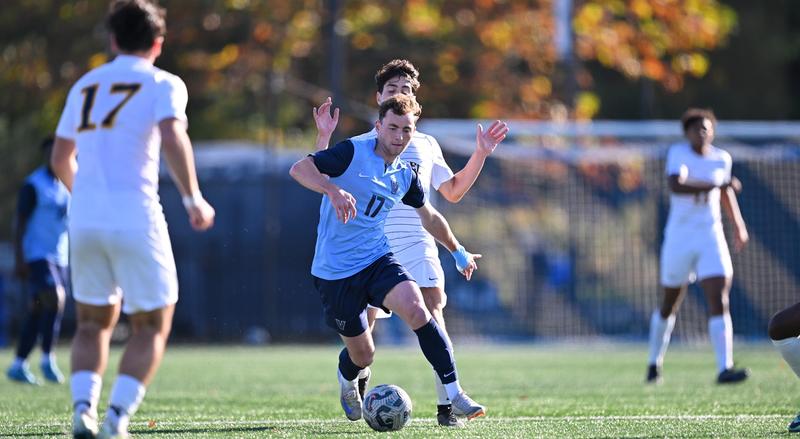
VILLANOVA, Pa. – Eleven regular season home games at the newly resurfaced Higgins Soccer Complex highlight the 2025 Villanova Men’s Soccer regular season schedule announced today.
“We’re excited to release our 2025 schedule, which features a strong slate of home games and a number of high-caliber opponents that will test us early and help prepare us for the rigors of Big East play,” said head coach Mark Fetrow, who enters his second season at the helm after succeeding longtime head coach Tom Carlin in November 2023.
“This schedule reflects our commitment to growth and excellence, and we’re looking forward to competing in front of our fans and representing Villanova with pride. Go Cats!”
A young Wildcats squad will open the new campaign on Thursday, Aug. 21 when it hosts Rider at 4 p.m. That match is the first of three in a row at Higgins that also includes an Aug. 28 date with Iona (kickoff at noon) and a Philly Soccer Six Labor Day clash with Saint Joseph’s (also with a noon kickoff).
Villanova will celebrate Alumni Day on Saturday, Sept. 13 when it welcomes 2024 NCAA College Cup participant Princeton to the Higgins Soccer Complex at 1 p.m. The Wildcats will face another Ivy League foe that played in the postseason when they visit Penn on Sept. 23.
The BIG EAST slate begins with a clash against DePaul on Friday, Sept. 19 at 4 p.m. Other league foes set to visit Villanova’s West Campus include Seton Hall (Oct. 11); Creighton (Oct. 17); and St. John’s (Nov. 1). The Wildcats will wrap up league play at Marquette on Saturday, Nov. 7.
Other non-league opponents set to travel to Villanova in the second half of the schedule include NJIT (Oct. 7), VMI (Oct. 21) and Holy Family (Nov. 4).
A new artificial turf, replacing the original surface that debuted when the facility was rechristened in 2014, is currently in the installation process at the Higgins Soccer Complex.
NIL
Topper, Stambaugh working on NIL measure
HARRISBURG — Pennsylvania House Republican Leader Jesse Topper (R-Bedford/Fulton) and Rep. Perry Stambaugh (R-Perry/Juniata) announced they will soon introduce legislation to provide protections for student-athletes receiving compensation for the use their name, image and likeness (NIL). While a case currently wending through federal courts will likely expand the NIL universe, no state legal structure exists. […]
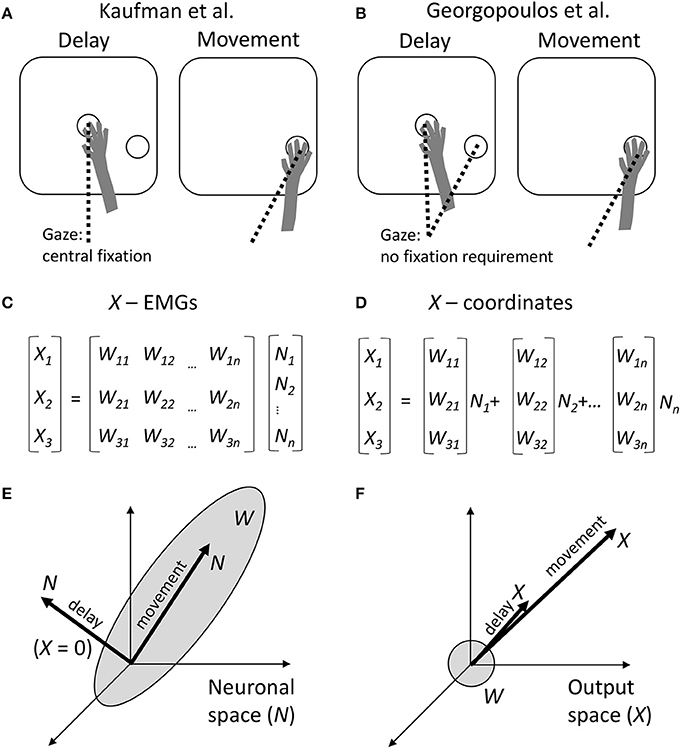
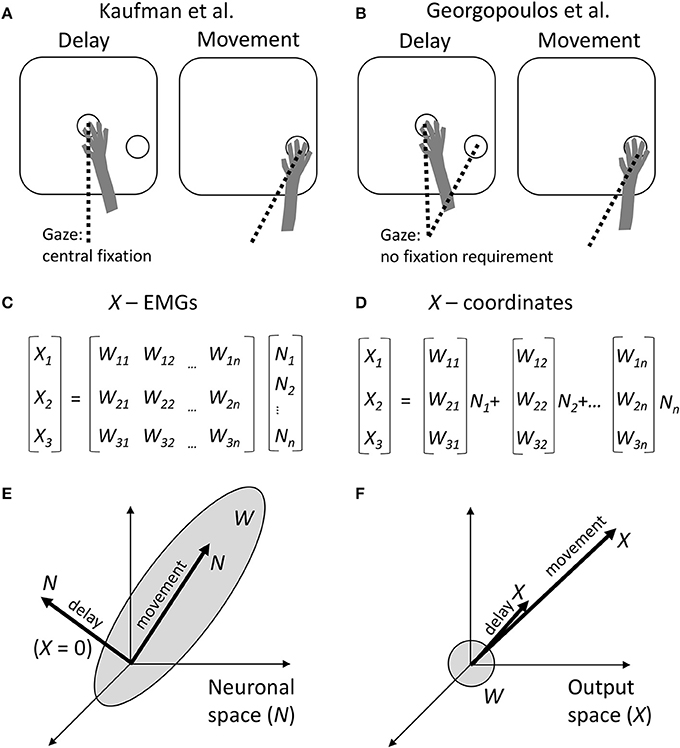

HARRISBURG — Pennsylvania House Republican Leader Jesse Topper (R-Bedford/Fulton) and Rep. Perry Stambaugh (R-Perry/Juniata) announced they will soon introduce legislation to provide protections for student-athletes receiving compensation for the use their name, image and likeness (NIL).
While a case currently wending through federal courts will likely expand the NIL universe, no state legal structure exists. This leaves compensated student-athletes vulnerable to poor financial decisions and without recourse if they should become injured during their career, according to a news release provided by Topper’s office.
-

 College Sports2 weeks ago
College Sports2 weeks agoPortal Update – Basketball and Gymnastics Take Hits
-

 Rec Sports3 weeks ago
Rec Sports3 weeks agoThe Program, a New Basketball Training Facility, Opening in Greenpoint This September
-

 College Sports2 weeks ago
College Sports2 weeks agoPortal Update – Basketball and Gymnastics Take Hits
-

 Professional Sports2 weeks ago
Professional Sports2 weeks agoJon Jones answers UFC retirement speculation as fans accuse champion of 'holding the belt …
-

 NIL1 week ago
NIL1 week ago2025 NCAA Softball Tournament Bracket: Women’s College World Series bracket, schedule set
-

 Health2 weeks ago
Health2 weeks agoBYU women's basketball guard injures ACL twice
-

 Youtube2 weeks ago
Youtube2 weeks agoXavier Legette taught Marty Smith his signature celly
-

 Motorsports2 weeks ago
Motorsports2 weeks agoWhy IHOP Rode With Dale Earnhardt Jr. In Amazon NASCAR Debut
-

 High School Sports2 weeks ago
High School Sports2 weeks agoToday in the MHSAA
-

 Professional Sports2 weeks ago
Professional Sports2 weeks agoPaddy Pimblett sends Ilia Topuria an ominous message ahead of UFC 317 lightweight title shot




